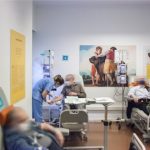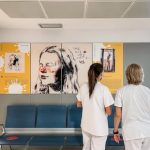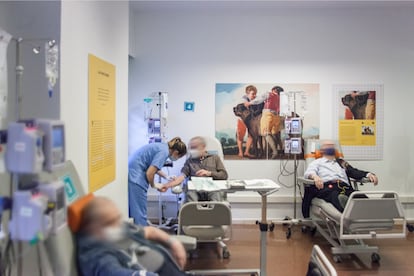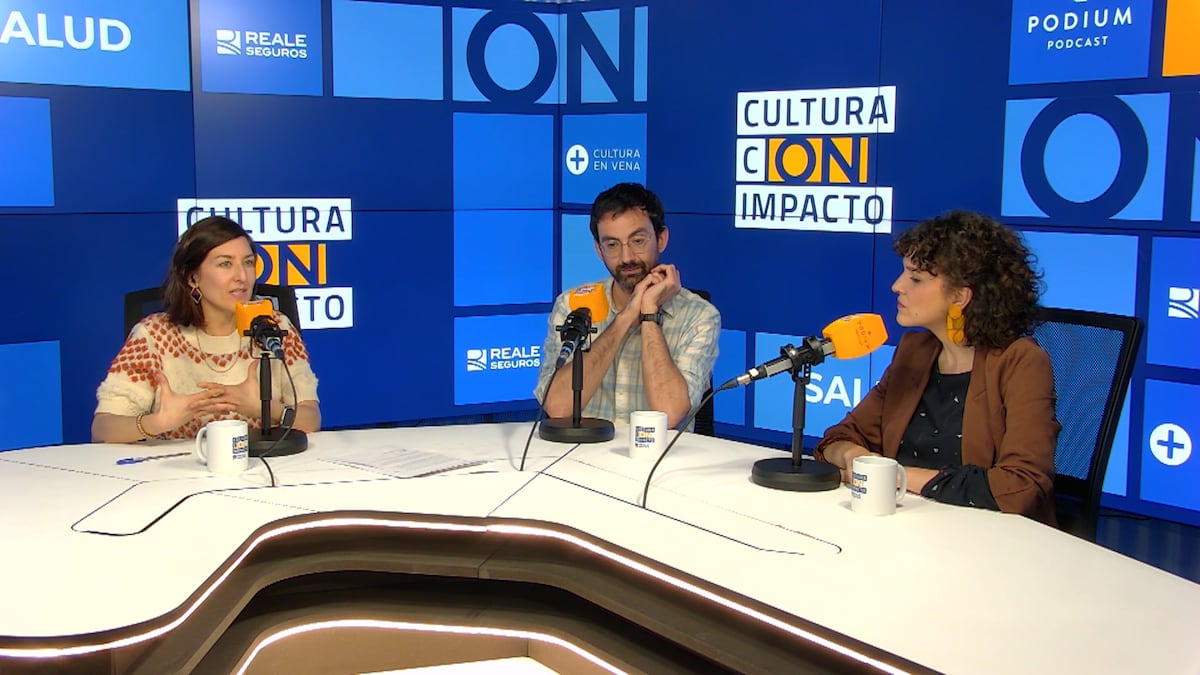

Art and culture not only inspire and stimulate creativity, they also have a tangible impact on people’s physical and mental health. This is confirmed by an exhaustive study by the World Health Organization (WHO), which highlights the effectiveness of artistic interventions as a complement to conventional biomedical treatments.
The relationship between art and health is not a recent discovery. In Spain, the Cultura en Vena Foundation has been spreading culture in places where it does not usually reach for years. They bring art and music to healthcare settings and communities at risk of depopulation and investigate the benefits these artistic practices have on the health and well-being of those who receive them.
Culture in Vena is part of the campaign Culture with Impact, promoted by Reale Seguros through the Reale Foundation. Its objective is to highlight and promote projects that use the transformative power of culture in society, focusing on three areas: health, social inclusion and employment generation.
We carry out important curatorial work, creating texts that connect works of art with health and well-being, as well as offering cultural mediation in healthcare spaces to facilitate greater accessibility of content to all types of audiences.
Juan Alberto García de Cubas, president and director of Culture in Vena
Social impact of culture
Reale Foundation collaborates with Cultura en Vena in two projects: Ambulatory Art and Resident In-House Musicians (MIR). Pilar Suárez-Inclán, director of Reale Foundation in Spain, explains that both organizations “share objectives of supporting and accompaniment to groups in vulnerable situations through innovative and highly creative projects and initiatives.”
“The help of the Reale Foundation is absolutely essential to be able to carry out our programs,” explains Juan Alberto García de Cubas, president and director of Culture at Vena. “The support it provides us goes far beyond the mere economic contribution: it is intelligent philanthropy, based on the conviction that culture has a potential for social impact that is difficult to match,” he highlights.
Goya, in the hospital lobby
Ambulatory Art It is a program of temporary and traveling exhibitions through the network of Spanish Health hospitals and rural communities at risk of depopulation. In these interventions, Cultura en Vena creates new spaces in the healthcare environment, in lobbies, waiting rooms, within the day hospital and in the rooms.

The main beneficiaries of these artistic manifestations are patients, their families and health and hospital staff. “We carry out important curatorial work, creating texts that connect works of art with health and well-being, as well as offering cultural mediation in healthcare spaces to facilitate greater accessibility of content to all types of audiences,” summarizes García de Vats.
Healing melodies
After four years observing the great effects of live music on patients during interventions carried out in hospitals by the Música en Vena association, its then director, Juan Alberto García de Cubas, promoted a research project to scientifically support these effects. This is how the Project was born in 2016 MIR: Resident Internal Musicians, whose terminology, parallel to that of Resident Intern Doctor, refers to the insertion of the professional musician as part of the hospital staff.
This project, says the president and director of Culture at Vena, not only aims to demonstrate the positive effects of music on health: “It also aims to implement the WHO guidelines based on clinical studies [ya mencionados] and generate new professional circuits for unemployed musicians.”
The use of music as therapy seeks to improve patients’ hospital experience and promote their physical and emotional well-being. Furthermore, by integrating music into the disease process, the perception of the quality of medical care by patients, family members, and healthcare personnel is improved.

Art and Health Conferences
Reale Foundation also supports other Culture projects in Vena, such as Art and Health Conferences, dedicated to raising awareness about breast cancer and mental health. Both have been held at the Thyssen-Bornemisza National Museum, in Madrid. “These initiatives benefit both the specific target group and society in general, because culture is scalable, expansive and leaves an indelible mark on the population,” emphasizes the director of the Reale Foundation.
The first Art and Health Conferences They were focused on the fight against breast cancer. The meeting was accompanied by an exhibition that presented three masterpieces of art digitally intervened to simulate a mastectomy: The naked maja, by Goya; Venus and Cupid, of Rubens, and Adam and Eveby Baldung Grien.
These initiatives benefit both the specific target group and society at large, because culture is scalable, expansive, and leaves an indelible mark on the population.
Pilar Suárez-Inclán, director of Reale Foundation.
The second edition of the Art and Health Conferences focused on mental health. Through dialogue tables and various art and health stories, Successful cases in Spanish hospitals and psychosocial centers stood out. Professionals, artists and patients shared personal experiences about the therapeutic potential of art and culture as a complement to conventional medical treatments.
Culture with Impact
The video podcast Culture with Impact, broadcast on Pódium and produced by Reale Seguros, tries to bring closer and publicize the work of Cultura en Vena. Presented by cultural journalist Pepa Blanes, the program is a talk between Ana Folguera, cultural mediator of Cultura en Vena, and René Merino, illustrator. “Throughout this conversation we will discover how art, from different prisms, always has paths that intersect, with common experiences, and with the shared learning that art transforms and heals,” says Suárez-Inclán.
“Art connects with emotions, offering a space for critical thinking and reflection,” reflects Folguera. “When the exhibitions are taken to hospitals, they are adapted to accompany patients and healthcare personnel with texts focused on the patients’ vital processes; they are not conventional works and exhibitions,” she highlights.
Merino also highlights the emotional territory of art. in his book Everything will be fine (sometimes) He addresses topics that touched him very closely, such as anxiety, depression, insomnia or panic attacks. “Drawing is very good for me to organize myself inside. Drawing about mental health made me feel very good, it helped me a lot,” confesses the illustrator.

